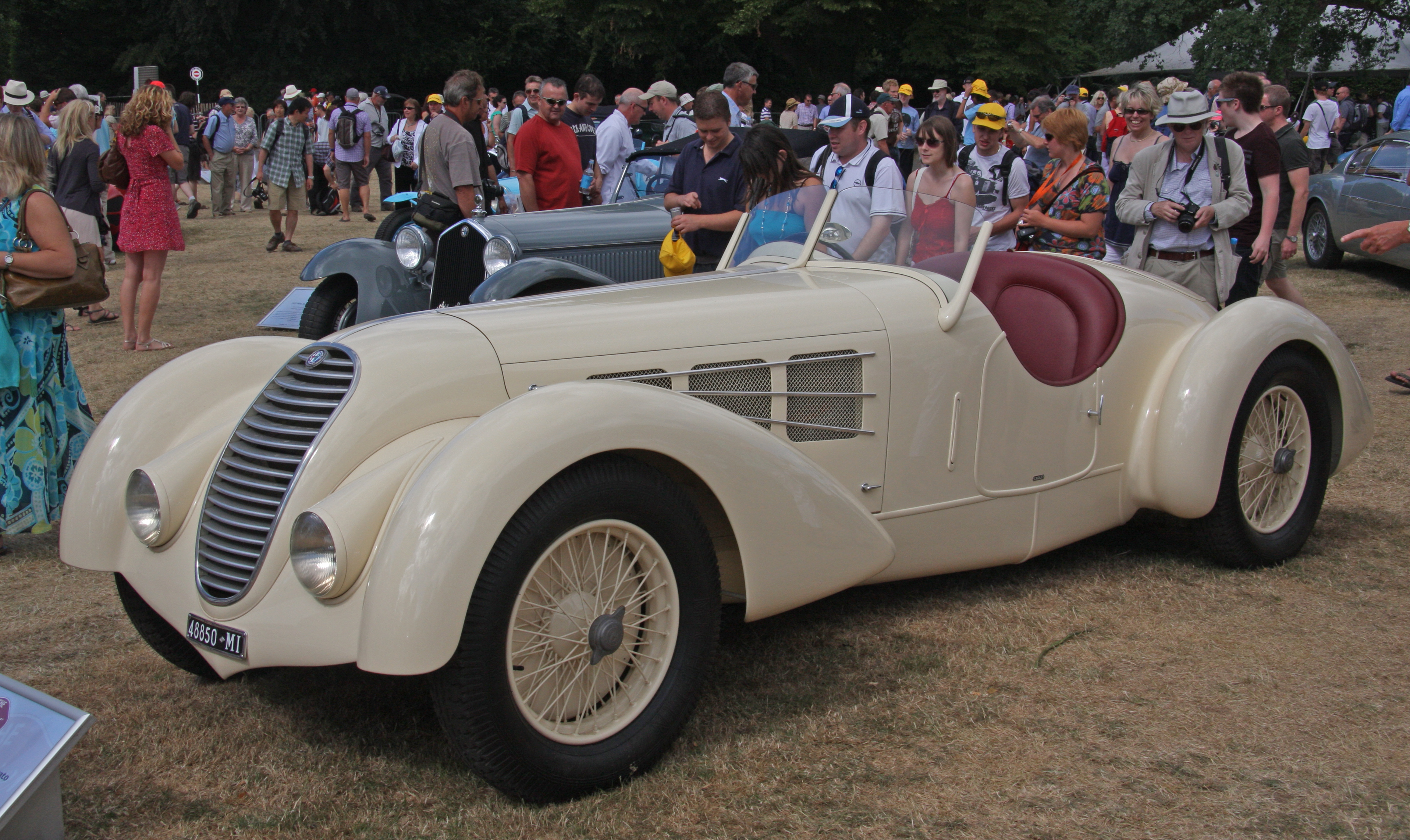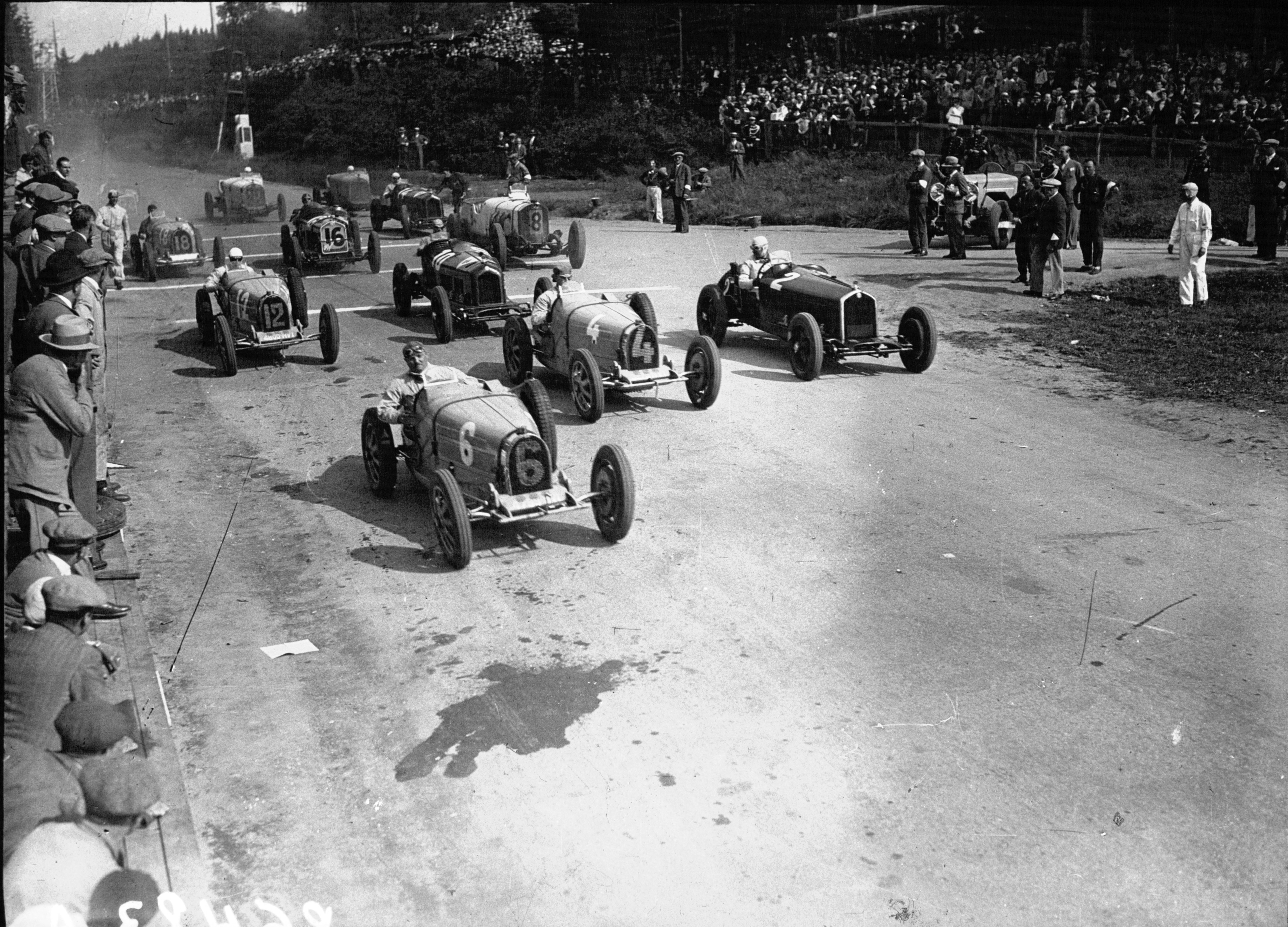|
Attilio Marinoni
Attilio Marinoni (1892 – 18 June 1940) was an Italian racecar driver from Lodi, Lombardy. After World War I, Marinoni joined the Alfa Romeo racing team as a mechanic. He became co-driver with Giuseppe Campari in the 1924 French Grand Prix. In an Alfa Romeo 6C, he won the 1927 Coppa Ciano and three Spa 24 Hours in a row: in 1928 with Boris Ivanowski, in 1929 with Robert Benoist, and in 1930 with Pietro Ghersi. He was promoted to chief mechanic and test driver of Scuderia Ferrari between 1934 and 1937. He died when he crashed an Alfa Romeo 158/159 Alfetta The Alfa Romeo 158/159, also known as the ''Alfetta'' (''Little Alfa'' in Italian), is a Grand Prix racing car produced by Italian manufacturer Alfa Romeo. It is one of the most successful racing cars ever; the 158 and its derivative, the 1 ... into a truck on an open highway during the war while testing for the expected 1943 season. Racing record Complete European Championship results ( key) (Races in ... [...More Info...] [...Related Items...] OR: [Wikipedia] [Google] [Baidu] |
24 Hours Of Spa
The 24 Hours of Spa is an endurance racing event for cars held annually since 1924 at the Circuit de Spa-Francorchamps, Stavelot, Belgium. It is currently sponsored by TotalEnergies. History The Spa 24 Hours was conceived by Jules de Their and Henri Langlois Van Ophem just one year after the inaugural 24 Hours of Le Mans was run. It debuted in 1924 over a circuit on public roads between the towns of Francorchamps, Malmedy and Stavelot, under the auspices of the Royal Automobile Club of Belgium (RACB). The present circuit was inaugurated in 1979 with only slight variations since then. The Spa 24 Hours was part of the European Touring Car Championship from 1966 to 1973, again in 1976 and from 1982 to 1988 (with the exception of 1987 when it was part of the inaugural World Touring Car Championship). The event also counted towards the World Sportscar Championship in 1953 and the World Endurance Championship in 1981. As on the Nürburgring, both a 24h and a 1000 km race is ... [...More Info...] [...Related Items...] OR: [Wikipedia] [Google] [Baidu] |
Alfa Romeo 8C
The Alfa Romeo 8C was originally a range of Alfa Romeo road, Auto racing, race and sports cars of the 1930s. In 2004 Alfa Romeo revived the 8C name for a V8-engined concept car which made it into production for 2007, the Alfa Romeo 8C Competizione, 8C Competizione. The 8C designates 8 cylinders, and originally a straight-8, straight 8-cylinder engine. The Vittorio Jano designed 8C was Alfa Romeo's primary racing engine from its introduction in 1931 to its retirement in 1939. In addition to the two-seater sports cars it was used in the world's first genuine Open wheel car, single-seat Grand Prix racing car, the Alfa Romeo P3, Monoposto 'Tipo B' - P3 from 1932 onwards. In its later development it powered such vehicles as the twin-engined 1935 6.3-litre Bimotore, the 1935 3.8-litre Monoposto 8C 35 Type C, and the Alfa Romeo 8C 2900B Mille Miglia Roadster. It also powered top-of-the-range coach-built production models, including a Touring Roadster (automobile), Spider and Touring Berl ... [...More Info...] [...Related Items...] OR: [Wikipedia] [Google] [Baidu] |
1935 Belgian Grand Prix
The 1935 Belgian Grand Prix was a Grand Prix motor race held at Spa-Francorchamps on 14 July 1935. Classification Race Starting grid positions Notes * Manfred von Brauchitsch took Luigi Fagioli's car after Fagioli walked off due to an argument with team boss Alfred Neubauer. * René Dreyfus became ill after inhaling exhaust fumes and handed his car over to Attilio Marinoni. Belgian Grand Prix The Belgian Grand Prix (French: ''Grand Prix de Belgique''; Dutch: ''Grote Prijs van België''; German: ''Großer Preis von Belgien'') is a motor racing event which forms part of the Formula One World Championship. The first national race of ... Belgian Grand Prix Grand Prix, 1935 {{belgium-stub ... [...More Info...] [...Related Items...] OR: [Wikipedia] [Google] [Baidu] |
1935 French Grand Prix
The 1935 French Grand Prix (formally the XXIX Grand Prix de l'Automobile Club de France) was a Grand Prix motor race which was held at Montlhéry, France on 23 June 1935. The race lasted 500 km (12.5 km x 40 laps) and was won by Rudolf Caracciola driving a Mercedes-Benz. Background For the first time, the Automobile Club of France decided that the grid positions should be set by practice times, rather than by ballot, a practice introduced in Europe at the Monaco Grand Prix. Having witnessed the more powerful German cars winning nearly every race they entered (notably not the 1934 French Grand Prix), the organisers decided to reduce the speeds of the Montlhéry circuit by installing three slow chicanes. This was ultimately successful in ensuring the competitiveness of the Alfa Romeos, with Tazio Nuvolari able to set second fastest time in practice, and completing the fastest lap of the race, albeit 23 seconds slower than last year's fastest lap due to the chicanes. S ... [...More Info...] [...Related Items...] OR: [Wikipedia] [Google] [Baidu] |
1935 Monaco Grand Prix
{{Monaco-sport-stub ...
The 1935 Monaco Grand Prix (formally the VII Grand Prix de Monaco) was a Grand Prix motor race held on 22 April 1935. Classification Fastest lap: Luigi Fagioli, 1:58.4 (96.7 km/h - 60.1 mph) References External links Monaco Monaco Grand Prix Grand Prix Grand Prix ( , meaning ''Grand Prize''; plural Grands Prix), is a name sometimes used for competitions or sport events, alluding to the winner receiving a prize, trophy or honour Grand Prix or grand prix may refer to: Arts and entertainment ... [...More Info...] [...Related Items...] OR: [Wikipedia] [Google] [Baidu] |
Alfa Romeo Tipo B
The Alfa Romeo P3, P3 monoposto or Tipo B was a classic Grand Prix car designed by Vittorio Jano, one of the Alfa Romeo 8C models. The P3 was first genuine single-seat Grand Prix racing car and Alfa Romeo's second Open wheel car, monoposto after Tipo A monoposto (1931). It was based on the earlier successful Alfa Romeo P2. Taking lessons learned from that car, Jano went back to the drawing board to design a car that could last longer race distances. Description The P3 was the first genuine single seater racing car, and was powered by a supercharged eight-cylinder engine. The car was very light for the period, weighing just over 1,500 lb (680 kg) despite using a cast iron engine block. The P3 was introduced in June, halfway through the 1932 Grand Prix season in Europe, winning its first race at the hands of Tazio Nuvolari, and going on to win 6 races that year driven by both Nuvolari and Rudolf Caracciola, including all 3 major Grands Prix in Italy, France and Germany. T ... [...More Info...] [...Related Items...] OR: [Wikipedia] [Google] [Baidu] |
1935 Grand Prix Season
The 1935 Grand Prix season was the second year of the new 750 kg Formula. The success of the previous year encouraged the AIACR to reinitiate the European Championship. It was composed of the seven national Grands Prix and was won by Rudolf Caracciola, driving for the Mercedes-Benz team. The team dominated the season winning five of those Grand Épreuves, as well as four of the other major races of the season. However, in one of the great motor-races in sporting history, Tazio Nuvolari in a Scuderia Ferrari Alfa Romeo beat the combined numbers of the German teams in their home Grand Prix. The season also saw the arrival on the international stage of the bright young talent Bernd Rosemeyer in the Auto Union team. ''Note that the Nazi German flag, bearing the swastika, was adopted on 15 September 1935 – one week before the final championship race of the season.'' European Championship Grands Prix Sources:Rendall 1993, p.364 Major Non-championship Races Multiple cl ... [...More Info...] [...Related Items...] OR: [Wikipedia] [Google] [Baidu] |
1932 German Grand Prix ...
The 1932 German Grand Prix was a Grand Prix motor race held at the Nürburgring on 17 July 1932. Classification References {{Grand Prix race report , Name_of_race = German Grand Prix , Year_of_race = 1932 , Previous_race_in_season = 1932 French Grand Prix , Next_race_in_season = 1933 Monaco Grand Prix , Previous_year's_race = 1931 German Grand Prix , Next_year's_race = 1934 German Grand Prix German Grand Prix German Grand Prix Grand Prix Grand Prix ( , meaning ''Grand Prize''; plural Grands Prix), is a name sometimes used for competitions or sport events, alluding to the winner receiving a prize, trophy or honour Grand Prix or grand prix may refer to: Arts and entertainment ... [...More Info...] [...Related Items...] OR: [Wikipedia] [Google] [Baidu] |
1932 French Grand Prix
The 1932 French Grand Prix (official name: XVIII Grand Prix de l'Automobile Club de France) was a Grand Prix motor race held at Reims-Gueux on 3 July 1932. The race lasted for 5 hours, and was not run over a fixed distance. Classification Race Starting grid positions References {{Commons category, 1932 French Grand Prix French Grand Prix French Grand Prix The French Grand Prix (french: Grand Prix de France), formerly known as the Grand Prix de l'ACF (Automobile Club de France), is an auto race held as part of the Fédération Internationale de l'Automobile's annual Formula One World Championsh ... 1932 in French motorsport ... [...More Info...] [...Related Items...] OR: [Wikipedia] [Google] [Baidu] |
1932 Italian Grand Prix ...
Grid of the 1932 Monza Grand Prix The 1932 Italian Grand Prix was a Grand Prix motor race held at Monza on 5 June 1932. Classification Race Starting grid positions References {{Grand Prix race report , Name_of_race = Italian Grand Prix , Year_of_race = 1932 , Previous_race_in_season = 1931 German Grand Prix , Next_race_in_season = 1932 French Grand Prix , Previous_year's_race = 1931 Italian Grand Prix , Next_year's_race = 1933 Italian Grand Prix Italian Grand Prix Italian Grand Prix Grand Prix Grand Prix ( , meaning ''Grand Prize''; plural Grands Prix), is a name sometimes used for competitions or sport events, alluding to the winner receiving a prize, trophy or honour Grand Prix or grand prix may refer to: Arts and entertainment ... [...More Info...] [...Related Items...] OR: [Wikipedia] [Google] [Baidu] |
1932 Grand Prix Season
The 1932 Grand Prix season marked the second year of the AIACR European Championship. It saw the debut of Alfa Romeo's sensational new Tipo B (also called the P3) and with it, Tazio Nuvolari won the Championship driving for the Alfa Corse works team. The 40-year old Nuvolari won two of the three rounds and was second in the other. Still running to a Formula Libre (open formula) rules for the cars, the regulations were revised to set the races to be between five and ten hours. However, all three national committees ran their races to the minimum time-limit. The other title contenders, Bugatti and Maserati continued to develop their models from the year before but they were rarely a match for the Alfa Romeo with its combination of high speed and light weight giving excellent balance for cornering. Nuvolari was dominant through the year, also winning the non-Championship Monaco GP and Targa Florio. His German team-mate Rudolf Caracciola won the other championship race, the Germa ... [...More Info...] [...Related Items...] OR: [Wikipedia] [Google] [Baidu] |
1931 Belgian Grand Prix
The 1931 Belgian Grand Prix was a Grand Prix motor race held at Spa-Francorchamps on 12 July 1931. Classification Race Starting grid positions Notes References Belgian Grand Prix Belgian Grand Prix The Belgian Grand Prix (French: ''Grand Prix de Belgique''; Dutch: ''Grote Prijs van België''; German: ''Großer Preis von Belgien'') is a motor racing event which forms part of the Formula One World Championship. The first national race of ... Grand Prix, 1931 {{belgium-stub ... [...More Info...] [...Related Items...] OR: [Wikipedia] [Google] [Baidu] |

.jpg)

.jpg)
